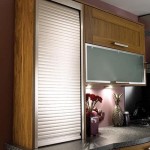Essential Aspects of Kitchen Cupboard Cornice Ideas
Kitchen cupboard cornices are not only about aesthetics. They also serve a valuable functional purpose by hiding any gaps or imperfections between the top of your cabinets and the ceiling. They can also be used to create a more cohesive look in your kitchen design, tying together different elements and creating a harmonious and visually pleasing space.
Choosing the Right Cornice
There are different things to consider when choosing the right cornice for your kitchen cabinets. The style of your kitchen, the height of your ceilings, and the overall design of your space are all important factors to keep in mind.
Size and Proportion
The size and proportion of your cornice should be in proportion to your kitchen and the size of your cabinets. Avoid using small cornices in large kitchens or oversized ones in small spaces. They should also be in balance with the height of your ceiling and should not overwhelm the room.
Material and Finish
Cornices can be made from various materials such as wood, plaster, MDF, or even metal. Wood cornices are a popular choice due to their warmth and natural beauty. Plaster cornices are classic and add a touch of elegance. MDF cornices are a cost-effective option and can be painted or stained to match your kitchen cabinetry. Metal cornices are less common but can add a modern or industrial touch.
Style and Design
The style of your cornice should complement the overall design of your kitchen. Traditional kitchens may opt for cornices with intricate details and embellishments, while modern kitchens may lean towards simpler and cleaner designs. Crown molding, dentil molding, and cove molding are popular choices for cornices.
Installation
Cornices are typically installed on top of kitchen cabinets using adhesive or screws. Ensure they fit snugly against the ceiling and are level. If necessary, use caulk to fill any gaps and ensure a smooth transition between the cornice and the cabinet.
Tips for Choosing Kitchen Cupboard Cornice Ideas
- Consider the style of your kitchen and choose a cornice that complements your cabinetry and décor.
- Select a cornice in proportion to your kitchen and cabinet size to avoid overwhelming or minimizing the space.
- Think about the material and finish of the cornice. Wood, plaster, MDF, and metal are all options with their unique characteristics.
- Choose a molding style that matches your kitchen's aesthetic, whether it's ornate or minimalist.
- Ensure proper installation by adhering or screwing the cornice securely to the top of your cabinets.
- Don't forget to caulk any gaps between the cornice and the ceiling or cabinets for a seamless finish.
Conclusion
Kitchen cupboard cornices offer a great opportunity to elevate the look of your kitchen while also serving a functional purpose. By choosing the right cornice for your space, you can effortlessly enhance the design and create a kitchen that is both beautiful and practical.

White Kitchen Cornice Box Design Ideas

Solid Oak Cornices Pelmets L Kitchen Wood Cabinets

Accessories And Extras To Match New Kitchen Cabinet Doors Homestyle

Accessories And Extras To Match New Kitchen Cabinet Doors Homestyle

White Kitchen Cornice Box Design Ideas

Solid Oak Cornices Pelmets L Kitchen Wood Cabinets

Custom Cornice Kitchen Window Treatment With Welting

Custom Kitchen Window Cornice Pelmet Valence You Choose Fabric

Common Kitchen Design Terminology Explained Bentons Kitchens

White Kitchens Large Crown Molding Google Search Kitchen Cabinet Soffit
Related Posts








